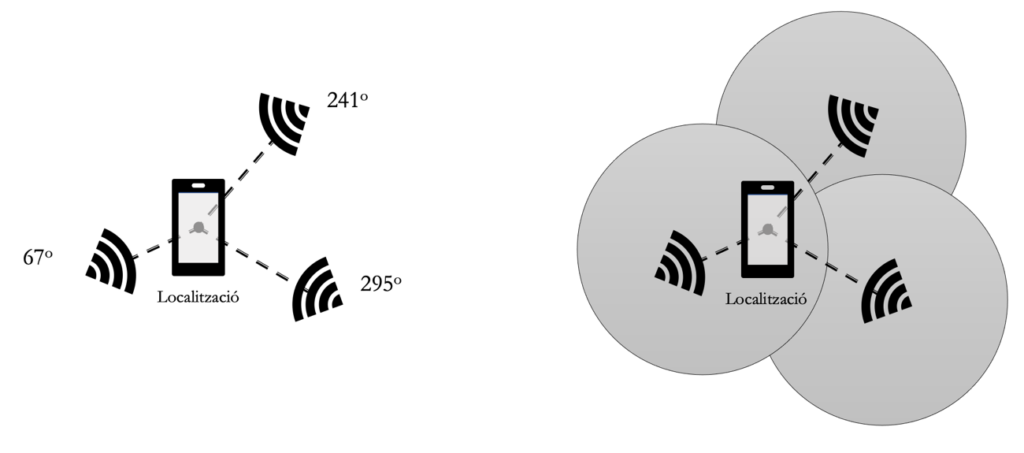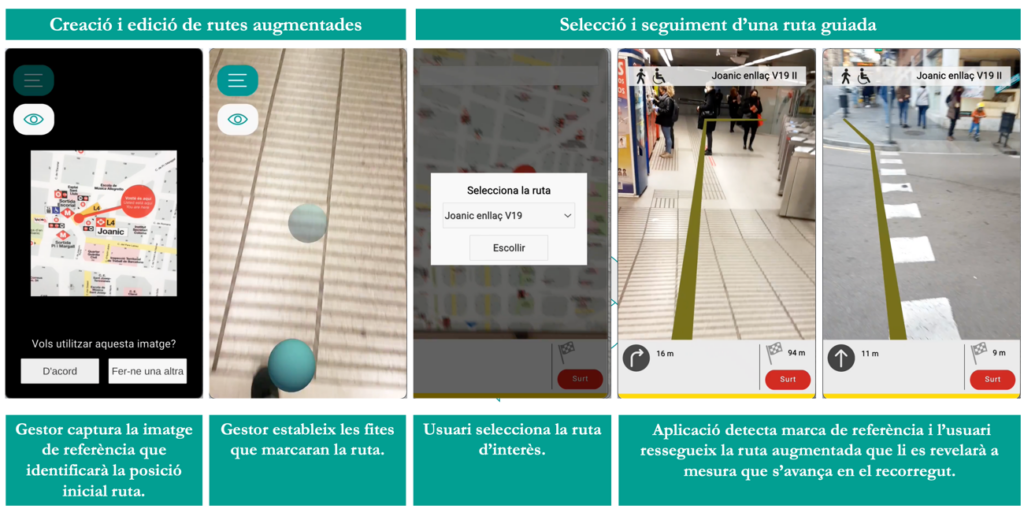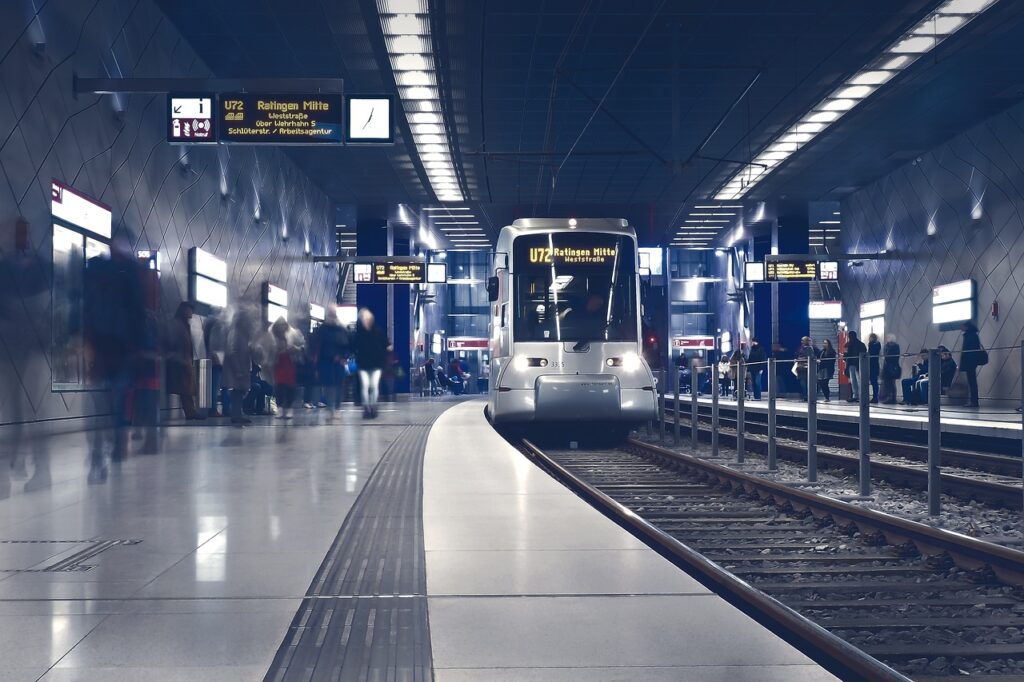Is it possible to improve the passenger experience of public transport with the use of ICT? In the following post you can find the participation of the inLab FIB in the commemorative book of the ATM’s 25th anniversary: Looking at the present, looking at the future, and which describes the social contribution of the Augmentant ATM project and how it can help improve the user experience in public transport.
Digital transformation, user and mobility
Digital transformation is present in each of the processes and actions that surround us on a daily basis, both in terms of their management and their consumption. Over the years, since the introduction of the first computers, there has been a desire to innovate and improve the use of resources associated with each of our processes while taking advantage of the potential offered by new technologies. Unfortunately, this desire for improvement has on numerous occasions come up against the incompatibility of not having a sufficiently mature or economically unviable technology, transforming our needs into a science fiction chimera.
We are in a unique moment where the synergy of technologies and the proposals for new ICT solutions together with the economic accessibility of the resources necessary for their exploitation, are correctly aligned so that science fiction can be consumed by its users and become a perfect complement aimed at improving the user experience in your daily processes.
The user experience in public transport
The term user experience (UX) is closely linked to software engineering and design, and can be understood as the need to meet the user’s expectations without complications or discomfort and at the same time provide value in each of the interactions the user has with the system.
This concept, which could be considered closely linked to ICT, can be extended to other processes and becomes an essential element in the understanding of a new service exploitation model around the use of public transport.
In this sense, the Autoritat del Transport Metropolitana (ATM) is betting on the development of new solutions that allow the user to be enriched in their day-to-day life through new information services that facilitate and do more
comfortable your journey as presented below.
Intermodality: Accessibility and Augmented Reality
ATM makes sure to offer citizens an accessible, sustainable and safe mobility system, keeping them informed about the mobility services it offers, and that is why it carries out coordination actions between administrations and collaboration with the transport operators involved.
The increase in new operators and services of new transport routes leads us to an increase in intermodality and, therefore, to an increase in trips associated with transshipments made by the user between the different elements of transport. These routes that one could consider static over time can lose their immutability due to the consubstantial change that we find in every dynamic system.
It is in these situations, of changes in the infrastructure or routes, that it is necessary to establish a set of communication actions that are useful for the end user and consequently the installation of special signage to assist him of the change
Next, a guidance solution based on augmented reality (AR) is presented that the ATM together with the inLab FIB of the UPC are developing with the aim of dealing with the case presented, and in return, improving the information around accessible routes for people with reduced mobility.
The developed navigation system allows not only to offer virtual signage through the use of augmented reality technologies, but also to deal with the problem inherent in indoor navigation systems that do not allow the triangulation of the position from signs of satellite navigation systems.
Traditional indoor localization systems require the deployment of infrastructures that make them excessively expensive, and are mostly based on algorithms for triangulation of the signal emitted by different devices located throughout the interior space where the user is to be positioned. This triangulation process, which can follow different calculation methods – reception time, signal intensity, reception angle, etc. – entails maintenance that makes the cost of the system even more expensive.

As an alternative, the ATM and the inLab FIB have developed an indoor/outdoor route navigation system that, through augmented reality techniques and the processing of the image captured by the user’s mobile device – phone or digital tablet – is capable of placing the user within a route previously defined by the system manager.
These types of indoor localization are established within the context of scene-based localization and to achieve this the system defines within a virtual world a set of waypoints that will be discovered and displayed as the user moves through the world virtual, just as it would on a real excursion, leaving the mobile application the ability to synthesize reality and transport it to the virtual world and thus place the user within the augmented scenario. The developed system meets the main requirements that are expected to have an indoor localization system: accuracy, scalability and low cost.
The following diagram shows the basic workflow associated with the system that is currently in the testing and calibration phase.

Once the system is completely defined and calibrated, users who access the application will be able to follow predefined routes that will contribute to improving their experience, while showing information – static and dynamic – that may be useful on their journey , such as: estimated transfer time on foot, estimated time of arrival at the next transport, remaining distance to the destination or next change of direction and/or route to follow to access a vertical core, as well as other static and dynamic components that are of interest and have been defined around the route.
At a technological level, the implemented solution follows a pyramidal architecture where we can find at its base the infrastructure that supports the entire system, the API that allows communication with components of higher levels and the database that stores the routes contained in the system. In the intermediate level there are the technologies that support augmented reality techniques and above this are located the applications defined for iOS and Android devices that the traveler will use.

The indoor navigation system presented is complemented by an augmented reality information system, in the process of development, which should allow dynamic and static information to be offered to the user based on the signage of the different transport operators and/or plans information that he discovers along the way.
According to the author, the developed system may mark a turning point in how the user will interact with the metropolitan transport system. This change will be accentuated with the incorporation of immersive devices such as Holo Lens 2 from Microsoft ® , which should make it possible to transform augmented reality into mixed reality and offer a range of possibilities yet to be explored.
